As the world is being reshaped with a wave of new technologies and entrepreneurship, every country is preparing for the new economy and related societal transformation to be a part of this movement.
The miniaturization that resulted from the transistor's discovery enabled digital revolution and the associated innovation value chain created by computing, storage, and communication technologies is encompassing and transforming the world.
For the last hundred years, the technology-based transformation of the world started at significant universities along with an innovation ecosystem spearheaded by Bell Labs and Silicon Valley in the U.S. In parallel, universities in countries such as England, Central Europe, India, Israel, China, Singapore, Japan, and Korea raised human capital levels in their countries and contributed as an economic development dynamo. As knowledge become universal, universities increased their global competitiveness as centers of creativity, innovation, and opportunity. Thus, universities attracted talented and successful individuals, enhanced international synergies through joint R&D activities, by attracting global research funds, and so on. As their ecosystem grew, the value generated by synergies rapidly expanded in parallel.
Furthermore, universities improved the quality of life in the cities in which they were located, sought solutions to social problems, and became an important arena for intellectual and societal debate.
Are the Above-Mentioned Contributions of Universities for a Developed Country also Valid for Countries caught in the Middle-Income Trap?
One of the common patterns in countries that fall into the middle-income trap is not fully established university-industry cooperation. This is partly since their companies, apart from some areas of the defense industry, do not require a university except for labor. This is because the top-ranking industry organizations in these countries obtain their R&D needs from their foreign partnerships. Hence, this suppresses the R&D power of universities. Further, this leads to an industry structure oriented towards the domestic market. When a company is successful in one market, company repeat this structure in other domestic markets. It inevitably creates a “holding” structure that creates an umbrella for group of companies. This also works as a mechanism for foreign companies to enter the market. As each new market is formed, the holding company reduces the risk of its new company by leveraging other holding companies and the power of politics.
At the same time, the middle and lower-ranking industrial actors, who need technology, cannot motivate universities. This is due to the fact that academicians have been educated on subjects related to developed countries and continue their research in that direction because it ensures visibility of their research outputs on the world stage.[1]
R&D resources of the public are also focused on popular issues of developed countries in line with the trends in academia. The industry's cooperation with the university, on the other hand, cannot go beyond consulting on some issues and R&D projects on popular topics that do not directly produce a value or address the specific technological needs of domestic firms. This results in a lack of outputs with commercialization potential from the universities and universities focusing primarily on basic academic outputs.
This chronic problem, generally found in countries stuck in the middle-income trap, triggers a vicious cycle that pushes industry and academia to operate independently of each other.
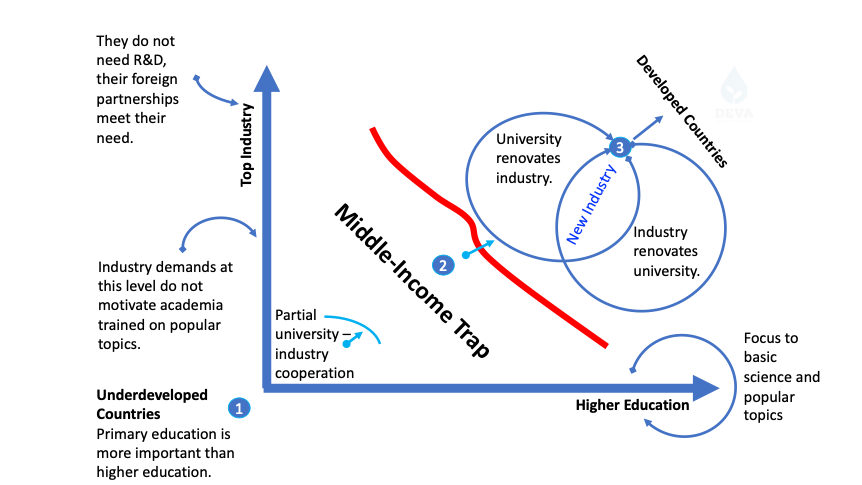
Figure 1 - University and Industry Relation
|
What is the Middle-Income Trap?
The middle-income trap is the term that is defined as the economic development index according to the World Bank and given to countries stuck in the middle-income band where their per capita is greater than 20 percent and less than 40 percent of that of the U.S. Countries stuck in the middle-income trap are “squeezed between the low-wage poor country competitors that dominate in mature industries and the rich-country innovators that dominate in industries undergoing rapid technological change.”[2]
In a sense, this is used as an indication that the country has lagged behind the economic breakthrough. According to the World Bank, 15 out of 101 middle-income countries were able to get out of this trap between 1960 and 2010. These include the latest debuts of Korea and Taiwan. According to experts, China is expected to emerge in 2023. Brazil and Argentina, for example, remain in the middle-income trap. Portugal fell from the developed country league to the middle-income trap for a short period.
On the other hand, Türkiye approached a stage of overcoming the middle-income trap in 2013. Unfortunately, since no breakthroughs have been made in education and the rule of law, it is currently heading towards becoming a low-income country.
|
What Should Be Done to Get Out of the Middle-Income Trap?
Today, establishing a university-industry synergy is a vital prerequisite for middle-income countries to escape this trap. Compared to the past, it is far more difficult to make technological leaps, and there are inward-looking tendencies in developed countries, making transfer of knowledge and technology more complex. Instead, developed countries are working on renewing their national innovation systems (NIS) in the face of digitalization, automation, and scaling power due to the overlapping effects of technological advances in all areas of life. In this context, digitalization has rendered information, entrepreneurship, and finance borderless; automation is rapidly changing job definitions, and scaling has paved the way for a monopoly economy in which “the winners take all”. To keep up with the pace of this environment, the global understanding of the new generation university is being re-defined.
How is the Understanding of the New Generation Universities being Shaped?
Universities previously provided knowledge, formation, and networks in that order. With the availability of abundant knowledge, this order has begun to reverse rapidly. Students who graduate from universities expect to be provided with social networks and formation while knowledge and skills are expected to prepare them for their professional lives better and ensure their employability. Developed countries are attempting to respond to the need for human resources to maintain their competitiveness in the technology and innovation-driven new world by transforming their universities into lifelong learning institutions. In this context, universities are being designed as destinations for students to visit regularly, and the university is being restructured to facilitate this process.
|
The history of universities can be found in the schools established by the Han Dynasty in China (206 BC – 220 AD), the museum and library in Alexandria (3rd century BC), Nizamiye Madrasa founded in Baghdad in the 11th century by the great Seljuk State Vizier Nizamülmülk, Kayseri Çifte Madrasa in the 13th century, and Karatay of Konya.
The Universities of Bologna, Paris, and Oxford, which were founded in Europe in the 11th and 12th centuries, laid the groundwork for modern universities.
With the invention of the steam engine (1800s), universities that were founded on transferring only past knowledge as above started to focus on discovering future scientific knowledge.
During the industrial revolution, education attempted to catch up with technology (as shown in the Figure 2), and then caught up during the digital revolution. From the industrial revolution we do not recall the names of universities but rather the names of middle-aged inventors. There was also a lack of innovation system except patenting. Therefore, we see inventors who struggled to commercialize their innovations.
|
Spinning Jenny, James Hargreaves (44)
Steam Engine, Thomas Newcomen (48)
Power Loom, Edmund Cartwright (43)
Sewing Machine, Elias Howe (27)
Telegraph, Samuel Morse (41)
Hot Blast and Bessemer's Converter, Henry Bessemer (43)
Dynamite, Alfred Nobel (33)
Incandescent Light Bulb, Thomas Edison (32)
|
With the start of the digital revolution, led by Stanford University and its accompanying universities, the world has progressed rapidly. University at the center stage of the national innovation system enabled systematic commercialization. The national innovation system constructed by a public-private collective understanding contributed tools for innovation; including R&D funds, the startup ecosystem, corporate laws and taxation, venture capital, IP Policy even employment laws. Hence, universities spearheaded and education exceeded the technology in the digital revolution. As a result, we see startups founded by young students unlike their struggling peers in the industrial revolution.
|
Today, technology is far ahead of conventional education, and we need to reinvent universities as seen in Figure 2. This is because, first, the job market is changing. There is unemployment because of automation. “Gig economy” is on the rise with a new understanding of employment and new professions arise with new technologies. Second, expectations from education are changing; generation Z has different aspirations. Third, technology is advancing. 90 percent of the world's data was produced in 2018.[3] Three times as much data was produced in 2021 as compared to 2018. Universities are undergoing their second major transformation and the new university model has to tackle these changes.
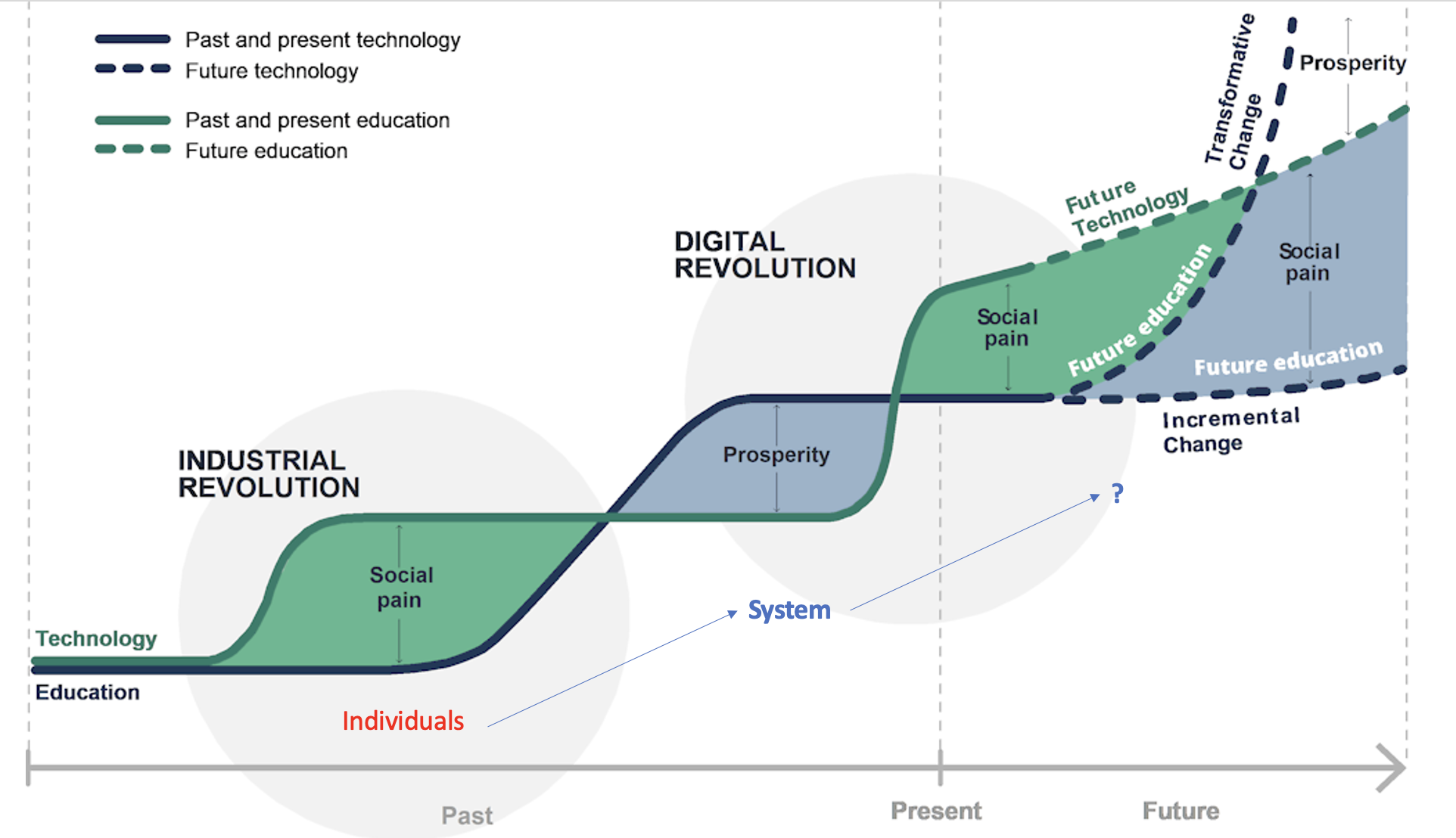
Figure 2 - The race between technology and education. Source: OECD
What Kind of a Vision There Should Be?
In explaining the success of Korea, economist Prof. Keun Leu put forward the vision of “being different if you want to be like developed countries”.[4] To this end, it is vital for middle-income countries to be more forward thinking about their universities so that they can contribute to science, innovation, and human capital. Imitating models of developed countries pushes the system into the Zeno Paradox. The Zeno Paradox is presented as a person's inability to catch a turtle. Someone programmed to make a run to the turtle's last location, will never catch the turtle because when it reaches the turtle's last location, the turtle will have advanced to a new location.
Korea picked specific industries to accelerate its economic transformation outside of what advanced economies did. High-level central planning played an important role. While comparing Korea to Latin American economies, Lee argues that “Asian style” catching up did not happen in Latin America because their domestic firms did not adapt and assimilate foreign knowledge. The difference between the two regions also points to a lack of an effective system of translating scientific knowledge into technological knowledge; hence, scientific knowledge was not commercialized and remained within the ivory tower (academia).
What Should They Do?
Middle-income countries need to address several handicaps to make the technological leap to high income. Romer who won the Nobel for his work on endogenous growth theory in 2018 emphasized that profit maximizing entrepreneurs and researchers bring about technological change. Factors that impact their efforts, including education, resources for research, in turn have an influence on economic prospects of a country in the long run.
In addition, the lack of locomotives of large companies in need of R&D is an obstacle for the development of the entrepreneurship and the innovation ecosystem. Beyond that, the pressure developed states place on developing countries, in terms of intellectual property, is a barrier in producing technology. Countries that can come out of the middle-income trap (Korea, Taiwan, China) have overcome these shortcomings and obstacles by choosing different areas than those of the focus of developed countries. They devised strategies that focused on short-term rather than long-term technology areas. They organized R&D incentives and trained human capacity in this direction. A new and distinct higher education strategy and a solid vocational and K-12 education system are required to break free from the middle-income trap.
How Should Türkiye’s Higher Education Model Be?
Türkiye’s higher education strategy should be structured with a new university model so that Türkiye can be competitive in the new world that is being shaped by scientific and technological transformations. The new world values diversification, subjective decision making, and empowerment rather than the rigid discipline of the industrial society. The new university model should be based on this reality and target to establish this understanding in the society.
The new university model should also address challenges of exponentially growing demand for higher education due to the increase of the young population in Türkiye, global competition that scales and crosses borders rapidly with digitalization, excessive administrative centralization that results in mediocrity due to appealing to the lowest common denominator, and the reduced correlation between the quality of diplomas and success in employment.
According to a study by the World Economic Forum, changes are expected in 60 percent of jobs in Türkiye.Therefore, the need to develop new skills for the new economy has gained urgency, and university-industry synergy will be critical in this endeavor. We need to create and expand thematic ecosystems to help our companies become globally competitive and position them as candidates for the monopole economy. Thematic ecosystems to focus on may include 5G and 6G communication systems, new generation smart transportation systems including electric and autonomous cars, and areas that Türkiye has already made headway such as new generation defense industry and the digital gaming sector.
Beyond these, higher education policy should be informed by global realities, including the breaking resistance to online life with the pandemic, camp redundancy strategies developed because of questioning the global supply chains, the technology war between China and the U.S., the changes in the EU’s research structure with Brexit, and brain drain caused by the Russia-Ukraine war.
Against the backdrop of economic and geopolitical realities, our universities should swiftly develop programs that cover new knowledge and new fields; that ensure their graduates job security around the world. They should provide research outputs that contribute to national, regional, and global development.
University is Education on the One Hand, and Research on the Other
Today, public research funds are not focused on priority areas that could be part of the economic development plan. The limited amount research funds are distributed on popular topics worldwide, leaving the outputs scattered and weak. Even if this is corrected, universities will face a different problem. In a sense, the university will be trapped in the short-sighted view of the industry and conduct education and research activities that concerning economic and technological waves in the short term.
Tomorrow, universities should have a balanced research vision ranging from local to global. Hence, our universities besides local funds, should built capabilities to leverage EU R&D funds that have been available to Turkish researchers with the EU process but have not been sufficiently utilized so far. They should further aspire to receive R&D funds provided by global companies. At the same time, global companies are increasingly looking for human talent worldwide, and our universities should offer the high-level education to attract their interest.
What Should be the Vision of Universities?
The university administration should internalize an understanding that can take a long-term view from the past to the future and take short-term action. Universities should be able to establish rational, emotional, and subjective perspectives in decision making. And they should be able to organize their research activities in a balanced manner as basic research, curiosity-based research, and applied research. Universities must be able to rapidly update short- and long-term curricula and programs for diploma and employment success.
And each university should consider its own unique assets while establishing this vision. These include academic staff, administrative competencies, infrastructure, regional location, the quality of students, success of their graduates, etc. In other words, the most optimum setup should be made taking into account different assets of the universities while establishing a vision for each university and creating its management structure.
|
What are the Current Issues Universities Facing With?[5]
Massification – While there were 20 million students in 1985, this number will exceed 220 million in 2022. New students who make up the 24-34 age group are emerging. It is expected that this will increase to include even higher age groups. Lifelong education and new university types are offered as solutions.
Globalization – Developed countries are moving forward with higher education exports; student mobility (like Erasmus), program mobility (getting a foreign diploma remotely) and institutional mobility (opening remote campuses) are arrangements that are being adopted.
Financing – Financing of education becomes more difficult to meet with public resources alone. Income sources are becoming diversified. The separation of teaching and research budgets has begun. Prioritization of research funds and targeted projects have come to the forefront while the total budget is shrinking.
Privatization – In order to meet the increasing demand, different types of institutions such as private universities, corporate universities, cross-border universities, virtual universities are emerging alongside public universities and foundation universities.
Autonomy - Limited public resources in financing of higher education is paving the way for a more autonomous structure. The basic criterion for autonomy is defined by the OECD – (1) the right to own property, (2) borrowing, (3) being able to spend independently, (4) determining the program and course content, (5) deciding on hiring and firing, (6) determining salaries, (7) determining quota and (8) tuition as seen in Table 1.
Accountability - As autonomy increases, the university's financial and administrative operations and academic performance are expected to be open to external audits besides internal audits.
Quality and Accreditation - Increasing student numbers, autonomy, international student mobility, cross-border universities, and free movement of services across borders are giving rise to new mechanisms for quality assurance.
Management - Administrative innovation such as board of trustees, peer management, entrepreneurial models, and hybrid methods are implemented differently in each country.
Specialization – Universities move forward with different missions either as research or teaching universities with their own possibilities and constraints.
|
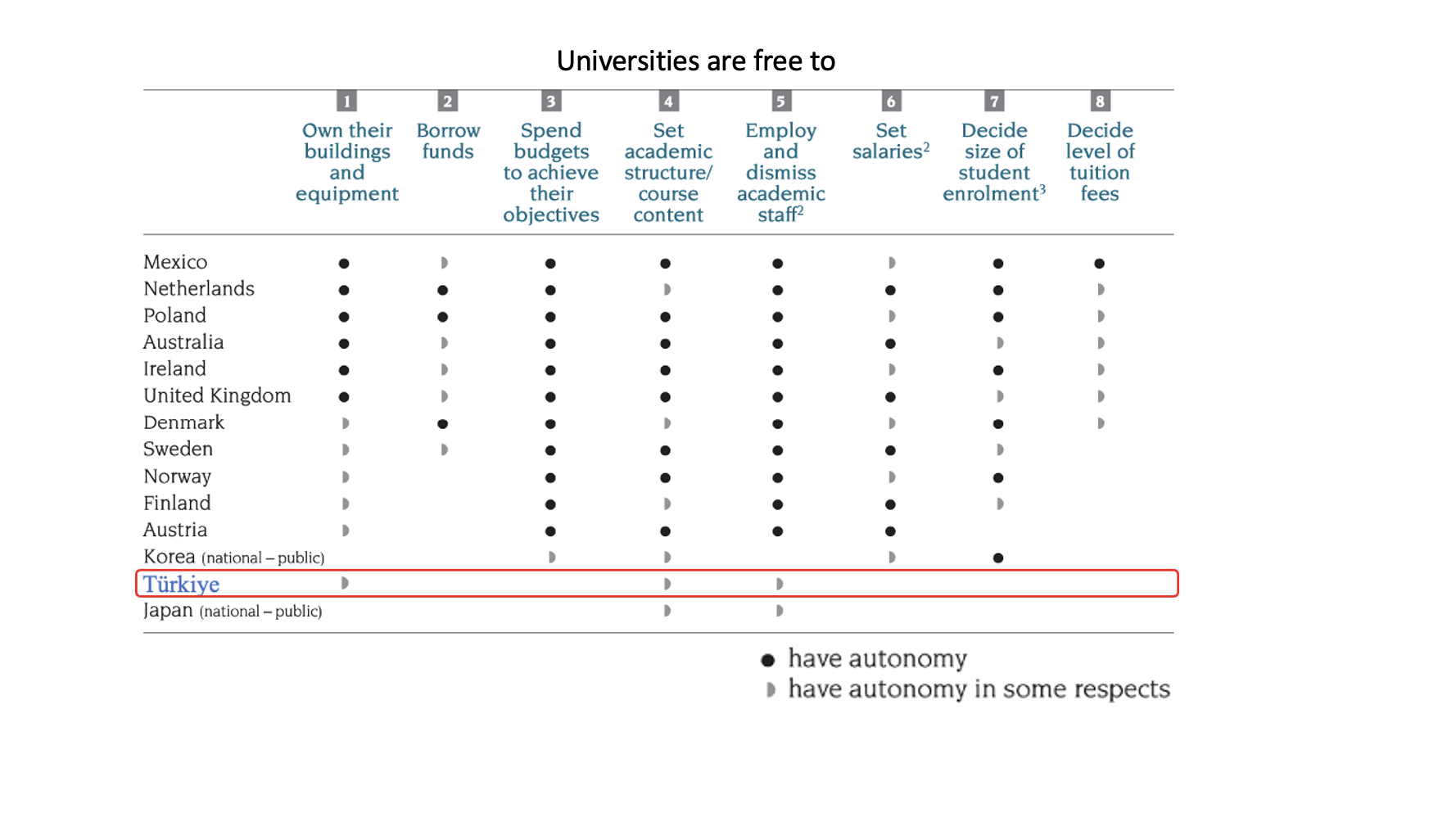
Table 1 – Autonomy in Universities, Adapted from[6] - Source: OECD
What Should be the Goals of the Universities?
The first step is to reach out, which means teaching students from a broader range of ages. Second, the programs should be dynamically expanded to include all new knowledge and areas of importance in the global economy. Third, developing relationships and synergies between industry and academia to increase the diploma's relevance to employment and produce research for commercialization. Fourth, building solid bridges with society to contribute to local and national development goals. Fifth, accountability is essential for developing accountable, open, and transparent governance models. Finally, considering dwindling public resources, generate non-public resources to meet these expectations.
Which Administrative Form Allows Turkish Universities to Have Such a Structure?
Universities in our country are administratively reduced to a singular decision-making mechanism. This process started with the establishment of the Council of Higher Education (CHE – “YÖK”) in 1980. CHE was designed as a Board of Trustees for twenty-nine universities reporting to the President of the Government. University autonomy was tried to be preserved since by law the President was above politics. The Board of Trustees (“trustee” or “regents”) is positioned between the university and the public as a council that in a sense forms the ownership of the university on behalf of the public and works for the benefit of the university for some period. The election of the rectors in the process was tried as the “collegial”. University elects top six candidates and CHE reduces it to three with a re-ranking power and the President chooses among the three regardless of the ranking. However, over time the CHE rankings and the decisions by the President gained precedence and election results were pushed into the background. In a sense, the chaos in the election process remained while election results became obsolete for most of the universities.
In this process, a centralized understanding was established in which the powers of the elected rectors were transferred to CHE as much as possible. With later changes, the election was abolished on the grounds of the chaos it generated, and the rectors were appointed by the President directly for all universities since 2016.
In terms of management, universities in Türkiye have transitioned from the "collegial" model based on elections to the "board of trustees" model. In a way, the board of trustees of all universities were transferred to the President via CHE; administrative decisions were reduced to a single-person committee where that person is the same for all universities, and consequently the university vision is reduced to a presidential term.
The new university model should consider these realities and establish a structure in which those who look to the future can run faster, avoid equalizing universities to a minimum common, establish a long-term vision for each university based on its culture and capabilities and let them preserve it.
Is Türkiye ready for an Autonomy in its Universities?
We must ask the question, "Why is there a need for self-governing independent institutions, independent of the political party in power, in a public hierarchy?" Why should the ruling political party, in power due to people’s votes, have restricted control over few institutions? The most correct answer to these questions is that the ruling political party is granted power for a limited time while some institutions have the ability to affect the destiny of a country from the past to the future. Of course, as the ruling political party increases its duration of being in power through elections, it is natural for its influence to increase over these independent institutions. The first example of an independent and autonomous council in Türkiye was the Constitutional Court, and now it is the Central Bank. We need to discuss the option of adding universities to this list.
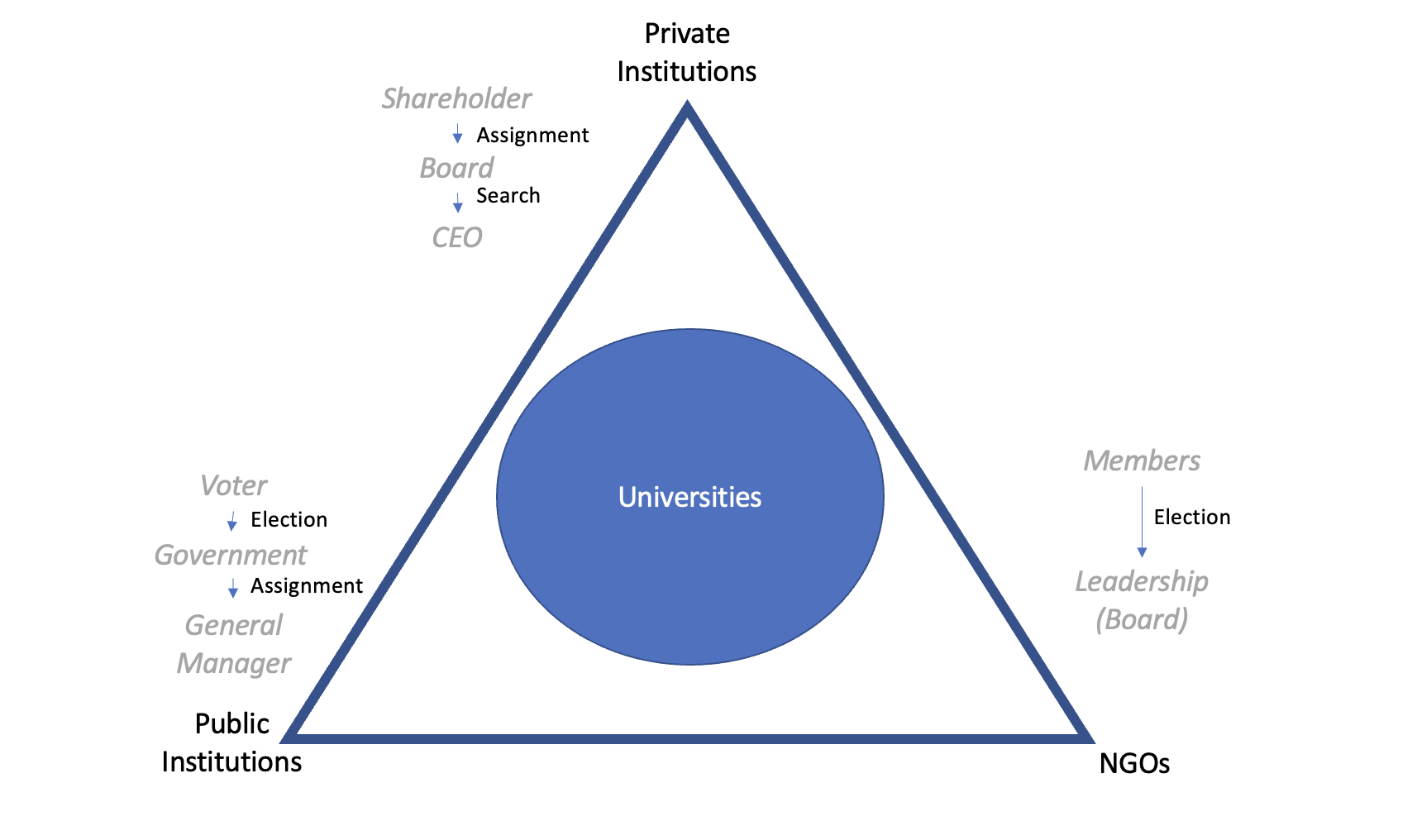
Figure 3 - Comparison of governing structures
University governance should differ from NGOs, private and public institutions as seen in Figure 3. Rigid performance metrics govern private institutions, but universities live with uncertainties to discover unknown unknowns. Public institutions could be focused within a single administrative era, but universities should be visioned as inter-governments. NGO directly elect a president, but NGO president is not responsible from the performance of members. Hence, we need to liberate management of universities except for specific check-balance mechanisms.
How Should We Establish an Autonomy?
Within the framework of the autonomous university, we need universities to establish their own board of trustees, thereby giving them a sense of ownership and empower them for governance while being accountable to the public.
For instance, can faculty, students and alumni play a role in ensuring autonomy? Figure 4 depicts a mechanism for autonomy. First, the university senate can compose the board of trustees/regents for the first time, and after approval from the faculty, the board can be in charge. It will be responsible for sustaining a long-term vision by appointing the rector either through an election or a search committee depending on the initially agreed structure. Trustees can be changed only by a qualified majority of parliament and the rector with full power can also be re-called either by trustees based on their key performance indicators or when there is a very significant disapproval among the faculty, students and alumni (reflected with feedback surveys that can be conducted). Plus, government funds should be provided indirectly to universities in autonomy through student tuitions and research funds so that university should compete to maintain a healthy financing. Also, government should provide the means and systems to monitor and rank the quality of the universities. A public university which is currently governed by centralized mechanism can gain autonomy with such a financial and administrative transformation.
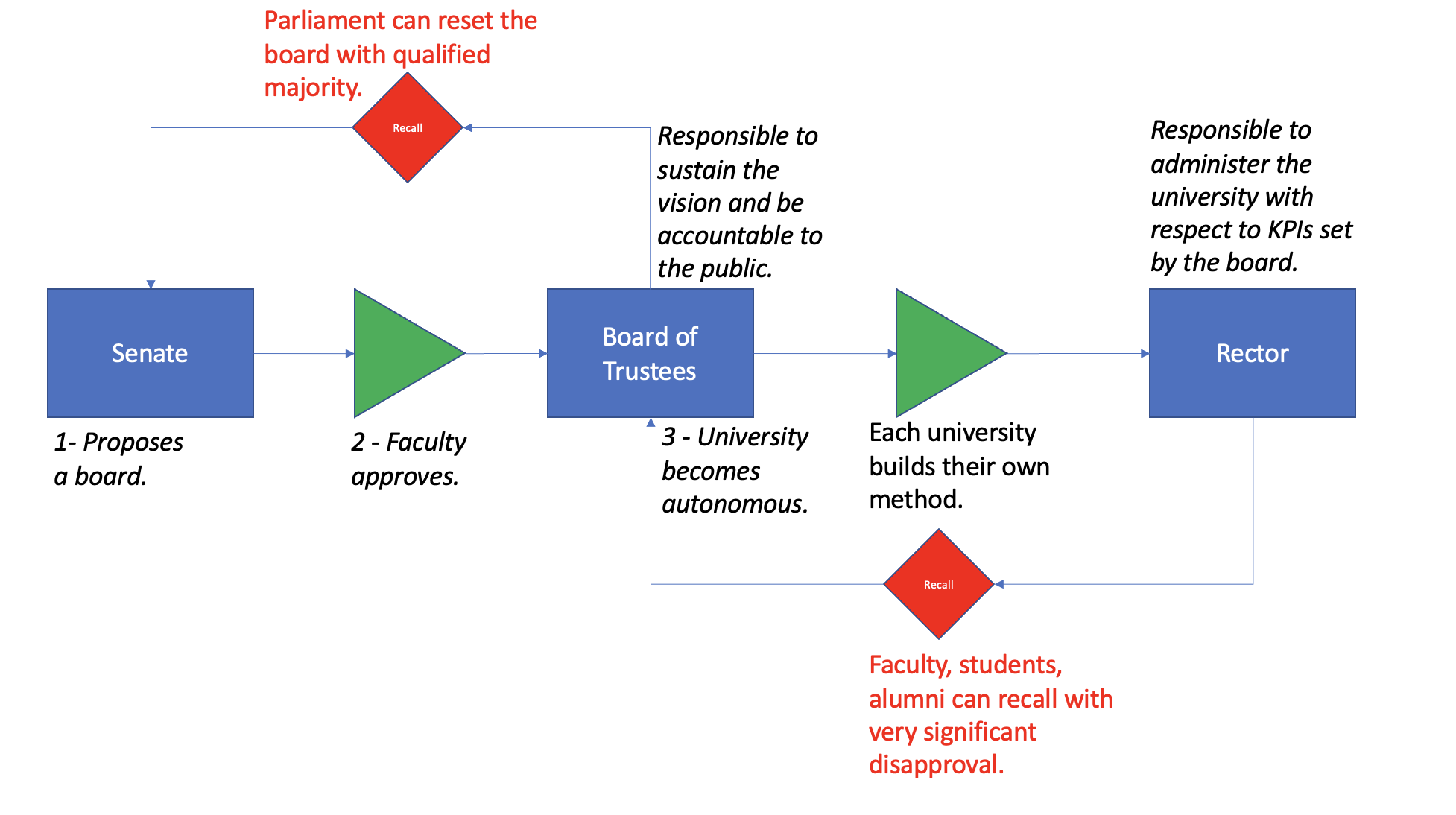
Figure 4 – An Example - How to Establish Autonomy in Universities
Conclusion
The university, which is a 900-year-old institution, should be seen as one of humanity’s most important cultural heritages. We should target a management style suitable for such an institution, which is dominated by long-term understanding, common sense and visionary evaluations and can have very important positive and sustainable outcome.
We must ensure the administrative, financial, and scientific autonomy of universities to raise their self-confidence, to allow them to prepare us for the global scientific, technological and entrepreneurial race that is full of unknowns. Each university can create its model and sustain its heritage with this autonomy. This will let us know which model will be successful in the new era to increase employment opportunities and contributions to science, society, and the economy.
Higher education is an expensive but rewarding investment. In a study conducted by the OECD, higher education was found to provide higher individual returns (comparing higher education graduates to secondary graduates); about 15 percent in England and the USA, and approximately 10 percent in Denmark, France, the Netherlands, and Sweden. This rate is estimated to be higher in developing and emerging economies such as Türkiye.
Universities can serve as an equal opportunity tool helping individuals transition from lower-income to an upper-income groups it can help domestic companies become globally competitive by providing research and human capital. The latter is also critical for Türkiye to make the technological leap and take part in the global technological race. For these reasons, our universities should be designed to maximize efficiency while also ensuring equal opportunity.[7][8]
[1] Keun Lee, The Art of Economic Catchup (Cambridge Press, 2019).
[2] Indermit Gill and Homi Kharas, “An East Asian Renaissance: Ideas for Economic Growth.” World Bank, Washington, DC (2007).
[6] (1) Data in Table 1 are based on responses to a 2003 survey of university governance by members of the OECD’s Institutional Management in Higher Education (IMHE) programme. Participation in the survey was voluntary, responses were not received from institutions in all OECD countries, and the IMHE members do not necessarily represent the full range of higher education institutions in the countries concerned. Institutional responses were cross-checked for consistency against each other, and published sources and national experts were consulted in preparing the table. However, the table shows a simplified picture, and countries vary in many detailed respects, as described in the Appendix. Countries are ranked in order of the number of areas in which universities reported autonomy, and alphabetically where the number is the same.
(2) “Employ and dismiss academic staff” (column 5) and “Set salaries” (column 6) include cases where any legal requirements for minimum qualifications and minimum salaries must be met.
(3) “Decide size of student enrolment” (column 7) includes cases where some departments or study fields have limits on the number of students able to enroll.
[7] Academic freedom defined by the Lima declaration.